A remarkable catch by the opener disrupted India’s momentum in the earlier stages of the game, as Rohit Sharma was sent back to the pavilion. This pivotal moment set the stage for Australia’s bowlers to dominate, eventually securing a six-wicket victory with a score of 241 for 4. Travis Head emerged as the standout performer, crafting a resilient 137 off 120 balls that played a significant role in Australia’s historic sixth World Cup triumph.
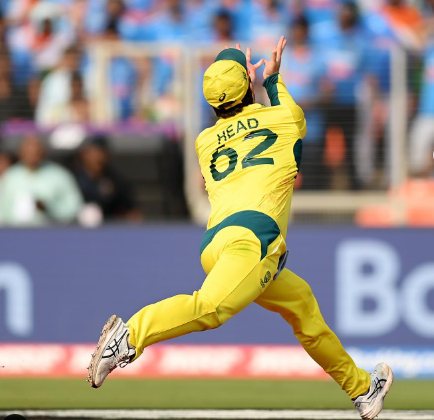
The spotlight turned to Head, whose composed demeanor amidst the game’s intensity exemplified the essence of Australian cricket. His monumental innings in Ahmedabad anchored Australia’s victory and underscored his pivotal role. However, his defining contribution arguably occurred hours earlier with a breathtaking catch that altered the course of the match.
Reflecting on the match-changing catch, one can’t help but ponder the potential outcome had Head not executed that spectacular take to dismiss Rohit Sharma. Australia’s chase of 241 would have faced a steeper challenge. The fierce display by India’s bowlers during the powerplay, led by Jasprit Bumrah and Mohammed Shami, hinted at the possibility of disrupting Australia’s pursuit had Rohit continued his aggressive batting form.
Yet, Head’s catch intervened, acting as a pivotal turning point that restrained India’s explosive scoring. During Rohit’s tenure at the crease, India surged to 80 for 2 in the initial powerplay, smashing boundaries with ten fours and three sixes. However, his dismissal curtailed India’s momentum significantly. They managed only four more boundaries and added 160 runs in the following 40 overs, failing to set a formidable total that could counter the impending challenge posed by dew – a primary concern for Pat Cummins and his strategy against Rohit Sharma’s aggressive gameplay.

Australia clinched victory comfortably in the end, securing a win with six wickets intact and a significant 42 balls remaining unutilized. This margin would have been more substantial if not for Head’s dismissal on the penultimate delivery of the chase. Nevertheless, Glenn Maxwell swiftly scored a double off his first ball, propelling his team to the target for victory. Interestingly, this target mirrored the exact total that England and New Zealand had failed to differentiate in a previous match four years ago.
The ease with which Australia wrapped up the match concealed the intense challenges they faced earlier. At 47 for 3 after seven overs, the situation looked grim, especially after Steven Smith chose not to review an lbw call from Bumrah, which later showed the impact was outside off the pad. This decision placed Australia in a critical situation against two of India’s exceptional performers.
David Warner, potentially in his final ODI innings, departed early, gifting Shami a catch to slip for just 7 runs. Warner had previously managed to edge the ball past the fielder’s boot for a boundary off Bumrah’s delivery. Additionally, Mitchell Marsh’s attempt to take on the quick bowlers resulted in a loose shot straight to the keeper, igniting the crowd’s fervor for the first time in the game.
However, Marnus Labuschagne, despite doubts about his place in the team mid-tournament, justified his selection with an outstanding unbeaten 58 runs from 110 balls. Labuschagne, renowned for his Test cricket abilities, played an essential supporting role, partnering with Head in a crucial fourth-wicket stand of 192 runs. They navigated both pace and spin adeptly, steadily building their partnership until around the 20th over when the pitch’s variable bounce gave way to the predicted dew, evening out the conditions.
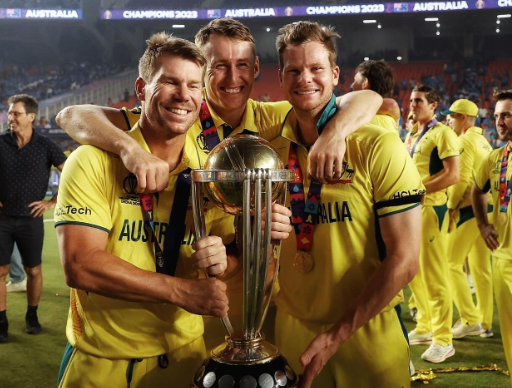
Upon Bumrah’s return in the 28th over, Australia had accelerated to 148 for 3. However, Bumrah faced an onslaught from Head, who quickly dispatched three boundaries. An lbw appeal against Labuschagne, decided by the umpire’s call, marked a pivotal moment, signaling India’s diminishing hopes of a comeback.
Ultimately, a clinical and ruthlessly effective performance by the world’s most dominant victors in the sport transpired. Each member of Australia’s XI contributed significantly to dismantling the essence of competition, turning what seemed to be an anticipated crowning moment, evident from the overwhelming sea of blue in the Narendra Modi Stadium’s stands and the presence of the Prime Minister himself, into a silent and stunned finale witnessed by the 92,453-strong crowd. The trophy-lifting moment itself encapsulated the national sense of disappointment, as Cummins stood desolate on the podium for a prolonged 20 seconds before his team could join him, having received their handshakes away from the center stage.
However, the absence of immediate acknowledgment on the field won’t diminish Australia’s sense of accomplishment. As evidenced by Head’s crucial catch, their victory was shaped primarily by their performance in the field. Similar to their semifinal clash against South Africa, the 37-year-old Warner acted as their gauge, exhibiting tremendous effort to prevent numerous boundary balls. While Rohit was at the crease, Cummins’ bold decision to bowl first seemed susceptible to being overwhelmed, reminiscent of previous encounters where opponents faltered against India’s exceptional array of stroke-makers.
Nevertheless, Cummins remained steadfast in backing his bowlers, drawing from their exceptional performance in the tournament opener in Chennai. In that match, India’s top three batsmen fell without scoring, leaving their team at 2 for 3, yet Australia defended a sub-par total of 200 with relative ease. Despite the dew factor, Cummins reckoned that the pressure of the grand occasion might weigh more heavily on the batting side during the first innings, especially if his bowlers could secure early breakthroughs.
Rohit’s brief but fierce attack underlined his bravery and selflessness, assuming complete responsibility for India’s aggressive play during the powerplay, particularly against Hazlewood, who had triggered the collapse in Chennai. His aggressive approach echoed Sachin Tendulkar’s preemptive strike against Glenn McGrath in the 2003 final, briefly giving the impression that it might work.
However, the match’s pivotal moment arrived swiftly – an act of exceptional fielding that immediately drew comparisons to Kapil Dev’s iconic running catch off Viv Richards during the crucial stage of the 1983 final. After slamming ten runs off two balls from Maxwell’s over, Rohit attempted another forceful shot over the long-off boundary but mistimed it high into the covers. Travis Head tracked back from point as the ball skewed high over his shoulder. With unwavering focus, he timed his dive to perfection, clutching the ball with both hands in a display of fielding brilliance.
It will go down as a seminal World Cup moment. Australia had still been battered for 80 runs in the first powerplay – the joint-most conceded in that phase of the first innings of a World Cup final – but now they sensed their chance to turn the contest on its head. Within moments, in the 11th over, Cummins, into his second over, exploited Shreyas Iyer’s hesitant poke without conviction or footwork, marking the downfall of India’s third wicket. Earlier, Shubman Gill had departed to a lackluster pull shot off Mitchell Starc. This sequence exposed Hardik Pandya’s absence as India’s linchpin in the lower order, previously camouflaged by Shami’s remarkable bowling impact.
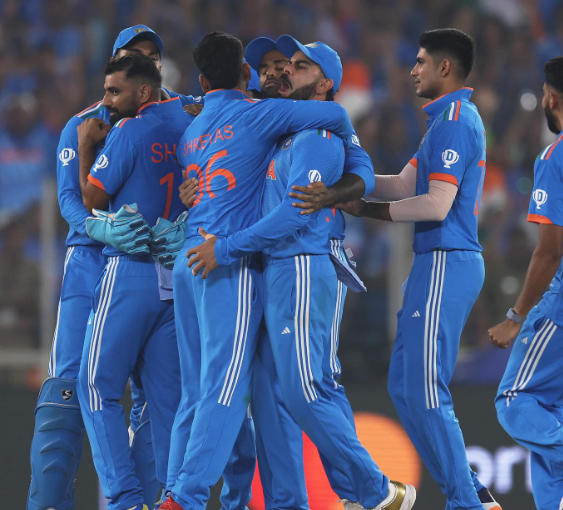
India had experienced no such anxiety during their ten prior tournament victories. This included five comfortable chases at the outset of their campaign and a substantial net run margin of 875 runs in their subsequent five bat-first triumphs. Consequently, India’s batting lineup from numbers 6 to 11 had rarely been called upon, amassing a mere 240 runs collectively in those matches—the lowest among all teams in the tournament. Suddenly, with Shami and Bumrah positioned at numbers 8 and 9, none of the established batsmen dared to initiate the descent towards the tail.
Despite the predicament, India could rely on Kohli’s ability to navigate such challenging scenarios. While his tournament tally of 765 runs at an impressive average of 95.62 showcased his abilities, his relentless pursuit of runs, often perceived as a vulnerability, became the foundation for his team’s resurgence. However, the reaction to his milestone—a brisk fifty off 56 balls—only intensified the prevailing tension.
Australia’s formidable bowling attack remained relentless, capitalizing on their opponents’ reluctance by rotating various bowlers. Maxwell, Head, and Marsh artfully contained the innings, conceding only 44 runs in ten overs, setting the stage for a potent finish.
Captain Cummins re-entered the attack in the 29th over, delivering a crucial blow by dismissing Kohli, who fell victim to a deceptive short ball, visibly frustrated by his dismissal. KL Rahul persevered but struggled to break free, finally ending a 97-ball boundary drought with a lofted shot off Maxwell. However, his innings was halted at 66 when Starc produced an unplayable delivery, exploiting the dry pitch’s potential for reverse swing.
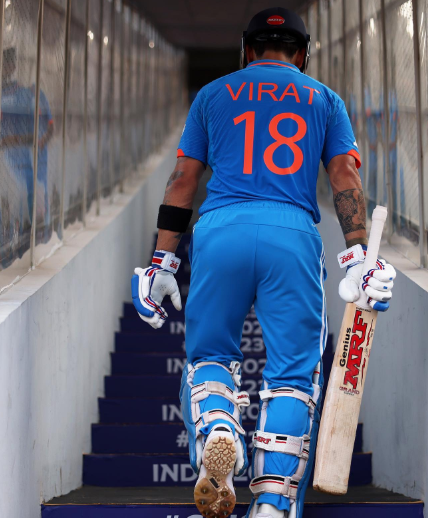
Jadeja’s promotion to number six couldn’t withstand Hazlewood’s late movement, leading to his dismissal for a mere six runs. As the lower-order batsmen found themselves in uncharted territory due to India’s previously smooth progress, Suryakumar Yadav managed only 18 runs before falling prey to Hazlewood’s bowling. The innings extended to the final ball with Kuldeep Yadav and Mohammed Siraj at the crease. Still, the stadium atmosphere remained subdued, overshadowed by Australia’s meticulously executed strategy and proven ability to claim the ultimate prize in cricket.
Ahmedabad saw a hint of blue, tinged with a longing for what might have transpired differently. Australia’s well-crafted plan and deep understanding of the requirements for winning the sport’s most prestigious title ensured the desired outcome was firmly in their grasp.
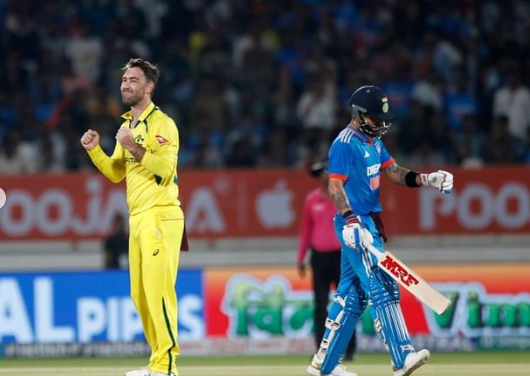
🏏Click here to visit our YouTube Channel🏏